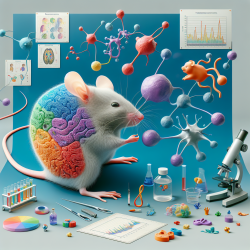Introduction
In the realm of speech-language pathology, understanding the brain's intricate workings is crucial for developing effective therapeutic strategies. Recent research titled "Phenotypic variation of transcriptomic cell types in mouse motor cortex" provides valuable insights into the diversity of neuronal types and their implications for therapy. This blog aims to distill the findings from this study and suggest ways practitioners can enhance their skills or delve deeper into related research.
Research Overview
The study utilized the Patch-seq technique to analyze over 1,300 neurons in the mouse motor cortex. This method integrates patch-clamp recording, biocytin staining, and single-cell RNA sequencing, allowing for a comprehensive examination of neuronal diversity. The researchers discovered that while broad families of transcriptomic types exhibit distinct morpho-electric phenotypes, individual types within these families often show continuous variation without clear boundaries.
Key Findings
- Distinct Family Phenotypes: Major transcriptomic families (e.g., those expressing Vip, Pvalb, Sst) have unique morpho-electric characteristics.
- Continuous Variation: Within these families, there is a continuum of variability in morphology and electrophysiology, suggesting that neuronal types do not always form discrete entities.
- Hierarchical Organization: Neurons form a hierarchy with distinct, non-overlapping branches at the family level, but continuous landscapes within families.
Implications for Practice
For practitioners in speech-language pathology, these findings emphasize the importance of considering neuronal diversity when developing therapeutic approaches. Understanding the variability within neuronal types can lead to more tailored and effective interventions. Here are some practical steps practitioners can take:
- Incorporate Neurodiversity: Recognize the diversity in neuronal types and consider individual variability in therapeutic plans.
- Stay Informed: Keep abreast of the latest research in neuroscience to understand the underlying mechanisms of speech and language disorders.
- Collaborate with Neuroscientists: Engage with neuroscientists to translate research findings into practical therapeutic strategies.
Encouraging Further Research
The study opens avenues for further exploration into how these findings can be applied to human therapy. Practitioners are encouraged to delve deeper into the transcriptomic and morpho-electric landscapes of neurons to enhance therapeutic outcomes. By fostering a research-oriented mindset, practitioners can contribute to the evolving understanding of the brain's complexities.
Conclusion
The research on neuronal diversity in the mouse motor cortex provides a foundation for enhancing therapeutic strategies in speech-language pathology. By embracing the complexity and variability of neuronal types, practitioners can develop more effective, individualized interventions. To read the original research paper, please follow this link: Phenotypic variation of transcriptomic cell types in mouse motor cortex.










